As the American rock band Kansas presciently sang in 1977, “All we are is dust in the wind.” We are dust in the wind. But we’re also dust in the airport. Dust in space. Virtual reality dust. And dust in the art gallery. Appropriately titled Dust, different iterations of granular material are the focus of the latest exhibition at New Media Gallery in New Westminster.
Like many of the previous exhibitions offered at the gallery, the individual works that make up the show are each fascinating and fully realized in their own right. But when the convergence of the different ideas act in concert and merge into a greater whole, it’s a whole other thing.
In the case of Dust, the giant cloud of connections and correlations that whirls forth doesn’t obliterate or obscure, making it harder to see. Just the opposite. Dust reveals things that we rarely consider: the plain and the mundane, the nitty and the gritty. Somewhere in the midst of this melange of motes, the sublime filters in.
Nowhere is this collusion/collision more in evidence than in Denis Beaubois’s installation No Longer Adrift. In international airports (New York City’s John F. Kennedy International Airport, Frankfurt Airport and Perth Airport), the artist is filmed using a carpet sweeper to pick up the lingering residue from thousands of travellers who leave behind minute traces of their passing. Bits of hair, fibre, plastic and other less-identifiable detritus combine to create a monument to minutiae and transience.
A bearded man of indiscriminate age, Beaubois makes his way around different airport lounges, largely ignored by the people waiting for their flights. In addition to the artist’s methodical work, the film captures a variety of human activity. Little kids playing while their parents stare at their phones in postures of ennui and impatience, announcements blurring into a fogbank of background noise. It all adds up to the peculiar atmosphere of airports, interstitial places of coming and going.
The deep, almost suffocating feeling of melancholy that airports often invoke seeps out like mist, enveloping and pervasive. This emotional quality is echoed in another video wherein the stuff that Beaubois has collected moves across the screen in a slow-panning crawl. Magnified to monumental scale, this tangled mix, bramble-wild in its depth and complexity, is mesmerizing to witness but also strangely mournful. I don’t know if other folks share my aversion to the emotional tenor of airports, but I found this part of the piece almost unbearably sad.
In addition to the video installations, the work also includes a dust brick, which is pretty much exactly what it sounds like. The materials, depicted onscreen, are carefully packaged, with detailed instructions from the artist as to its display. Something curious happens in between the viewing of the video’s macro version and the real thing, in the form of a long tube of greyish matter.
I’m not exactly sure why, but it’s like seeing a movie star, unannounced on the street: smaller, more ordinary, but still somehow imbued with celebrity magic dust. Except in this instance, it is real dust.
The inversion of value is implicit in the work. The act of turning the lowest and most humble of materials (really, you can’t go any lower than dust) into the stuff of art is the most immediate idea, but there are other forces at work here. The role of the artist, the banality of a public spaces, and above all, the notion that there can be beauty in all things, even the nittiest grittiest stuff under our feet.
In elevating the layers of things that we leave behind, No Longer Adrift does something rare. It makes visible — indelible really — the fundamental stuff of existence and dissolution.
We’re all in the process of falling apart, dropping traces of ourselves as we move through the world. This invisible indication that we were once here, bored while waiting for a flight, all the hum-drum ordinary moments of being, are all that remains.
The whole damn world is one just enormous airport lounge.
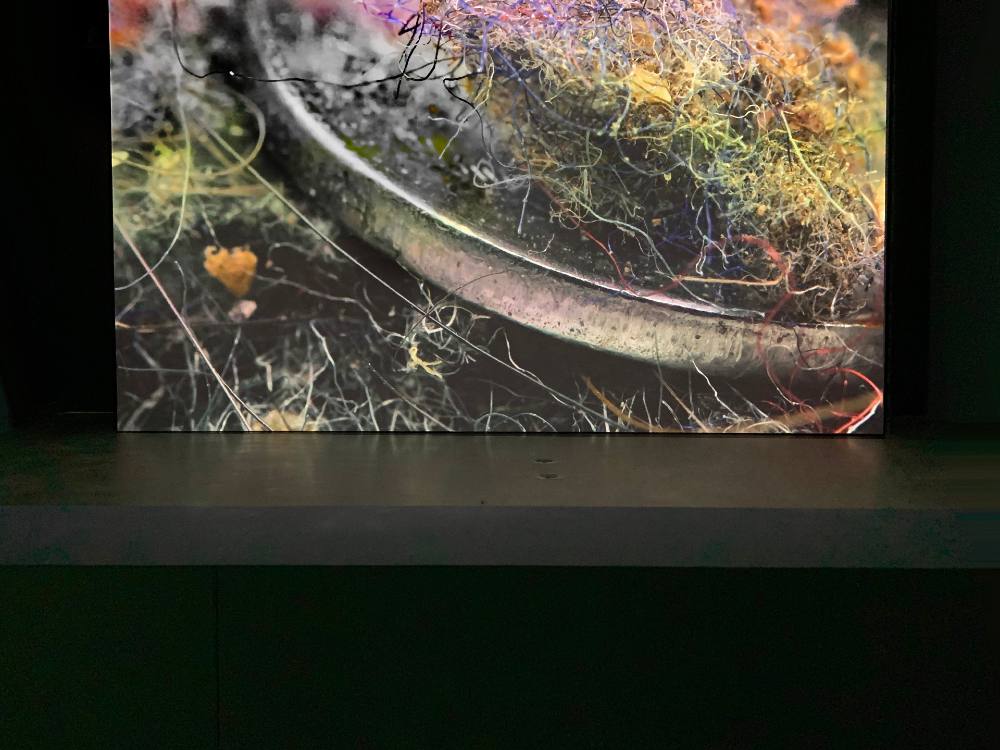
To locate the sublime, get into the grit
Herman Kolgen’s Dust Surface, a five-channel video installation, does something akin to Beaubois’s work, undertaking a different kind of journey. The word used in the description of the work is “katabasis,” referring to the descent to the underworld that is a critical part of the mythological hero’s journey. In Kolgen’s work, this deep dive starts on the surface of things before heading downwards, incorporating sound with macro-videography and video-microscopy.
The emotive layers of the work open up as you descend. Go down far enough and you’ll eventually enter the realm of quantum physics. A place where the separateness of matter begins to break down. Here is where things get interesting.
References to earlier works like Marcel Duchamp’s The Bride Stripped Bare by her Bachelors, Even, and Man Ray’s Elevage de poussière, both of which incorporated the accidental beauty of dust, surface easily here. But there is more than just the accumulation of external stuff.
This is a deep dive, down, down to oceanic depths, headed towards the molecular level. After the ear-popping pressure of descent, there is a resurfacing. What goes down must come up, after all.
In re-enacting an ancient, archetypal circuit, Kolgen’s work calls up one of the oldest narratives that lurks in the hearts of us humans.
The circularity of the journey — the downward dive and then the return to light and air — yields genuine catharsis.
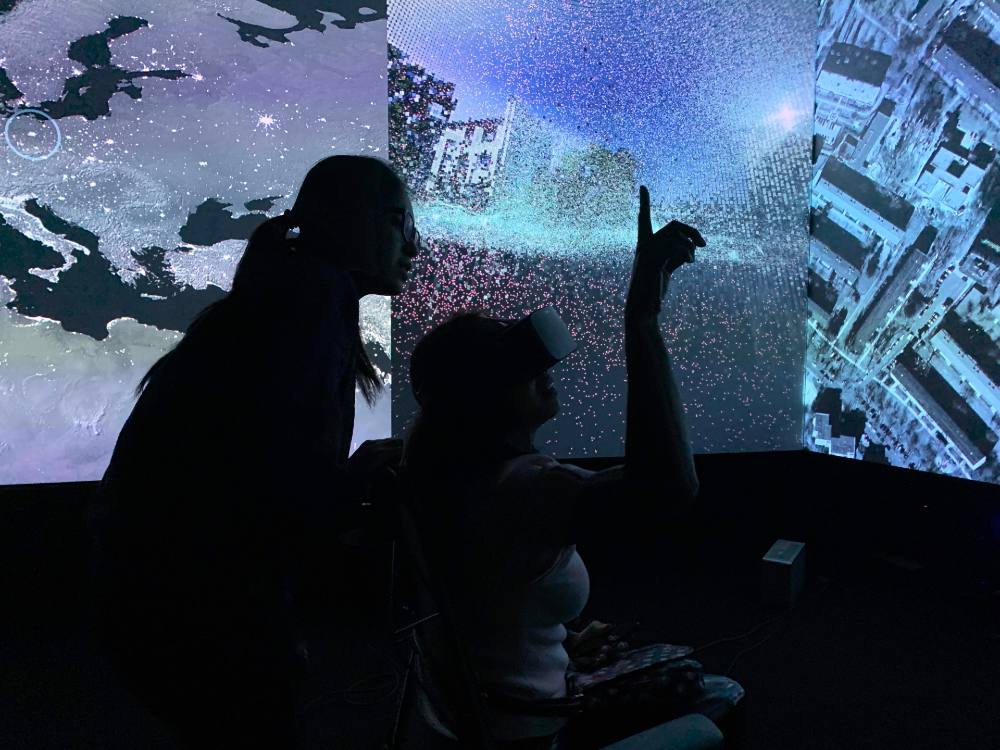
Making impermanence stay still
Michael Saup’s installation Dust VR (2018-23) takes a somewhat different approach to dust, expanding up and out to offer a global perspective. In a variety of locations around the world, the work’s software collects information from sensors installed in the different locations. The technical complexity of the work is considerable. Saup uses VR to demonstrate how particulate emissions accumulate to dangerous levels in different locations.
New Westminster is dotted with 10 sensors capturing and transmitting the levels of particulate into the work. Affected by matter of all kinds (including cars and people), the dust is transformed inside the VR environment into swarms of radiant light that whirl and swoop with fluid ease.
If the intent was to show the evils that pollution have wrought, the beauty of the work undercuts this idea. It is a strangely calming atmosphere that Saup has created. The feed of information from different sensors is depicted as glowing murmuration that move into reaction to what is happening in these specific places.
To be frank, there is something about VR that has always felt slightly oppressive and claustrophobic. But in Dust VR, this ominous feeling is balanced by the sheer loveliness of light and movement.
It was deeply pleasurable to simply sit and watch for a long time, as the different sites around the planet come up and reveal just how much junk is in the atmosphere. The streets and buildings shimmer, fairy-like. And when you look down with the VR headset, mandala-shaped openings are hovering just below your feet. Matevž Kolenc’s score adds another layer of beauty.
Art can change the nature of perception, allow you to see things anew or at least differently for a time. And in this fleeting, fragmented moment, other realities slide in sideways.
But aside from the most overt interpretations — including the famous Biblical quote “For you are dust, and to dust you shall return” — what else does Dust offer?
There is an attendant mournfulness that infuses the exhibition. Mortality, dissolution, entropy, the end of all things is there. But that’s where the most precious stuff also comes from, in the moments when the beauty emerges, shines out and then fades away.
Riding home on the SkyTrain after seeing the show, I watched the people getting on and off, the unfurling ribbons of trees, sky, landscape. Passing through New West, I saw a lot of graveyards. A clarity of vision stole over me. We’re only here for such a brief instant, then we disappear. But dust is forever.
‘Dust’ is on display at the New Media Gallery until Aug. 13.
Read more: Art, Science + Tech




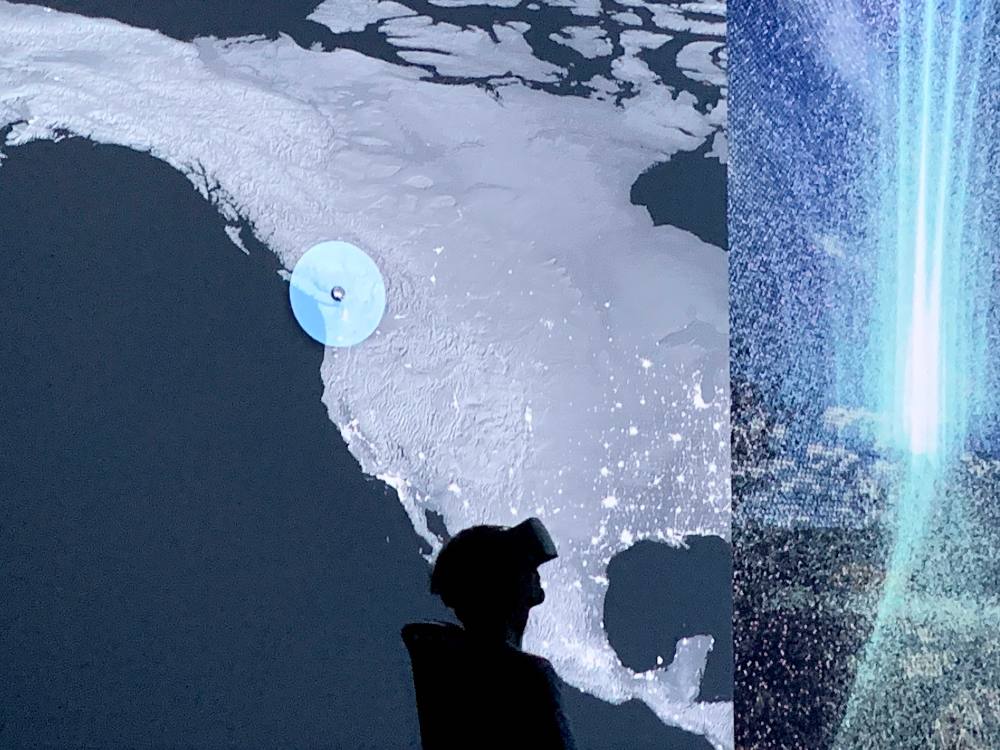






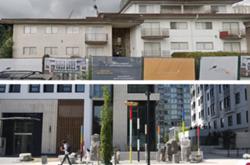


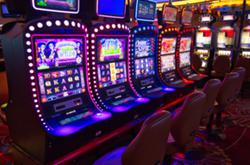


Tyee Commenting Guidelines
Comments that violate guidelines risk being deleted, and violations may result in a temporary or permanent user ban. Maintain the spirit of good conversation to stay in the discussion and be patient with moderators. Comments are reviewed regularly but not in real time.
Do:
Do not: